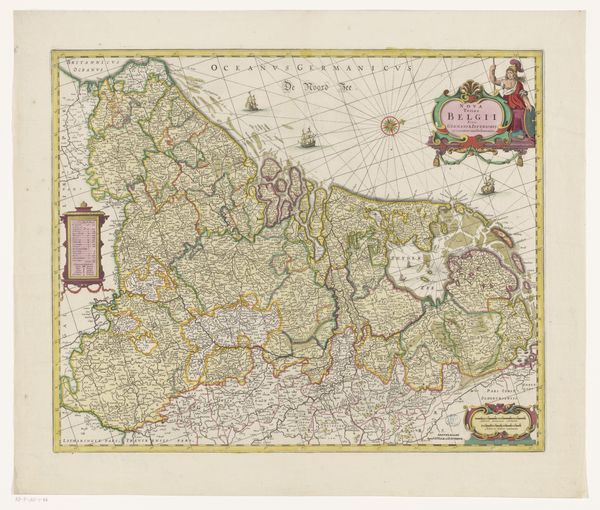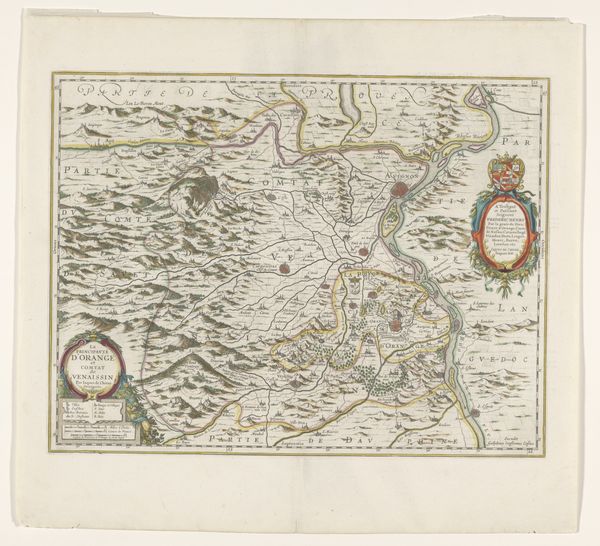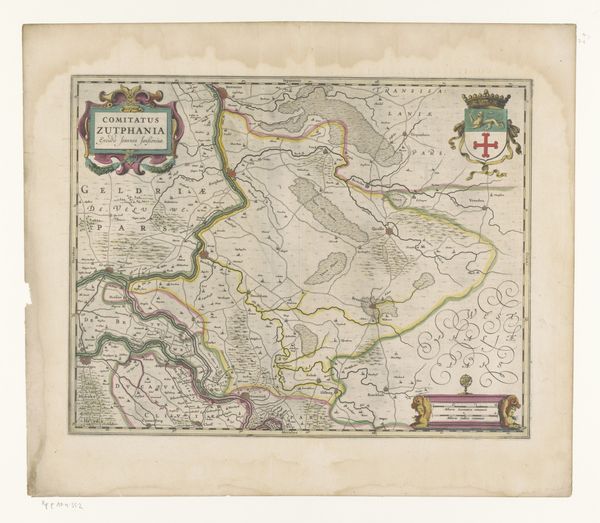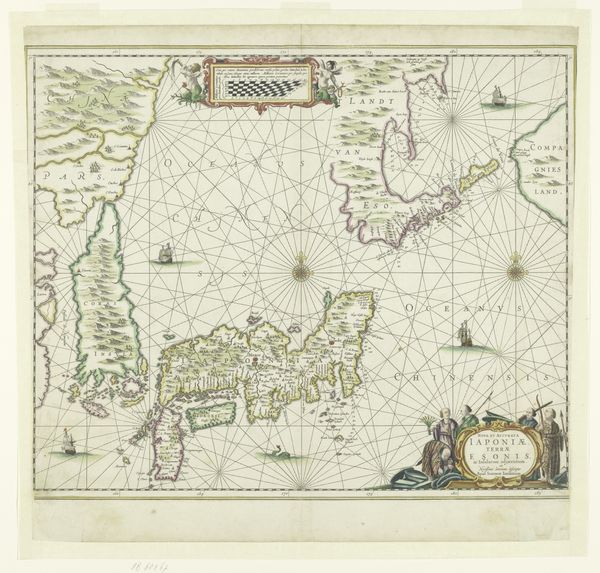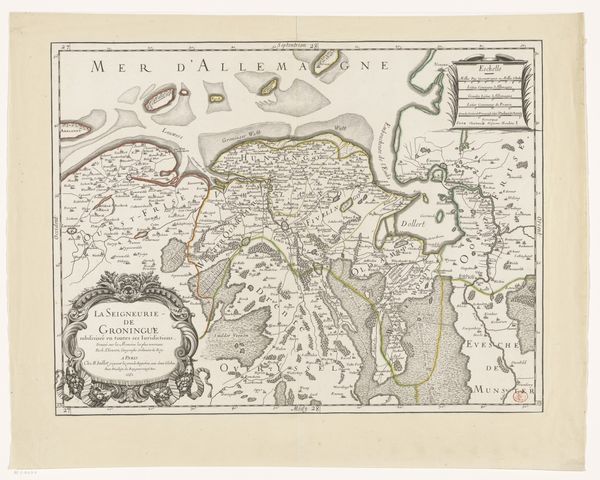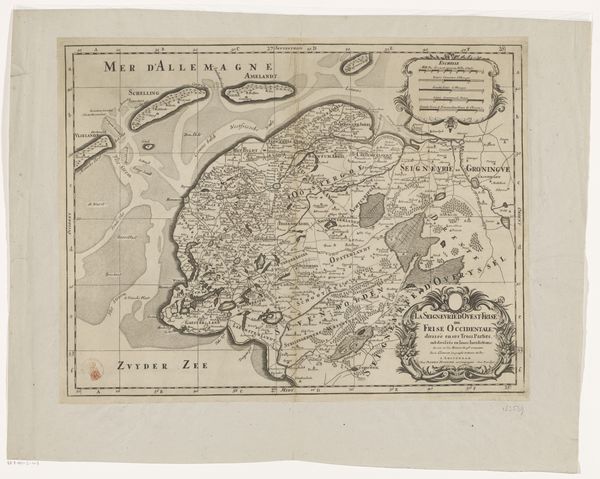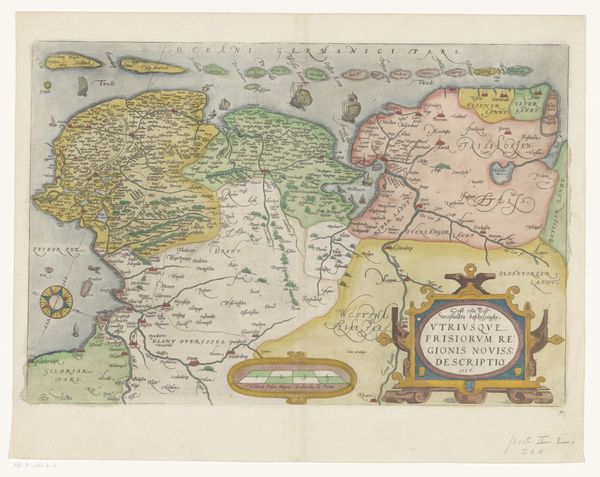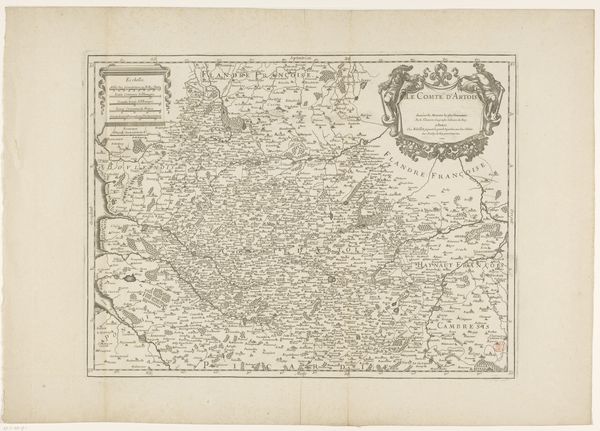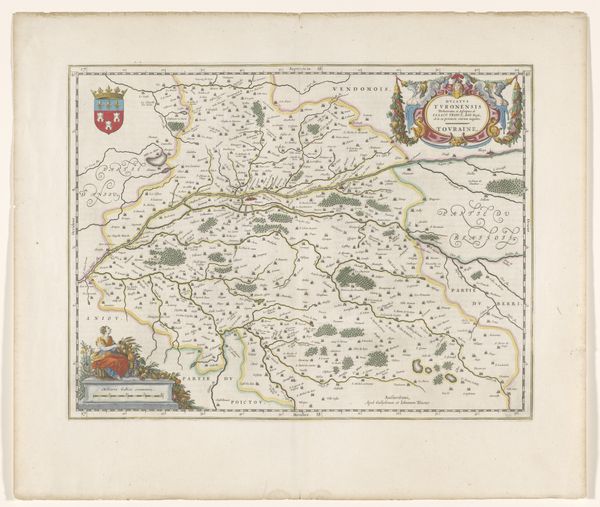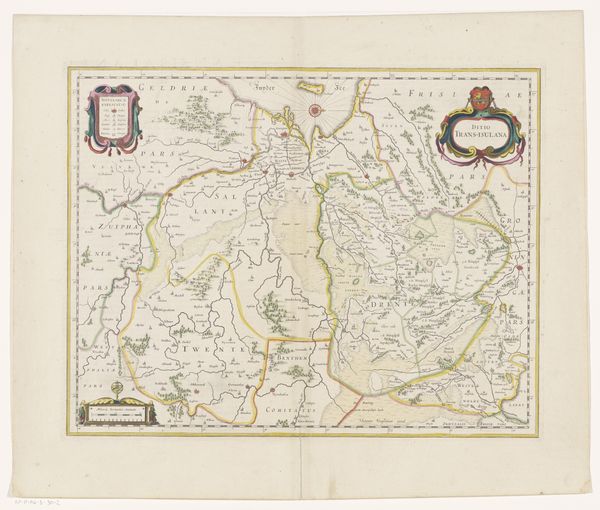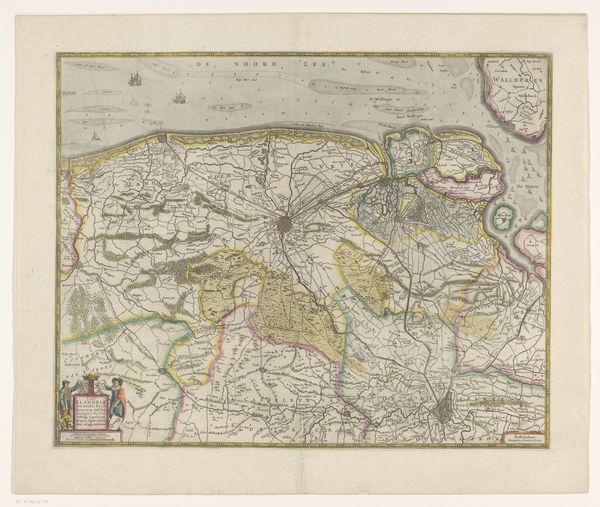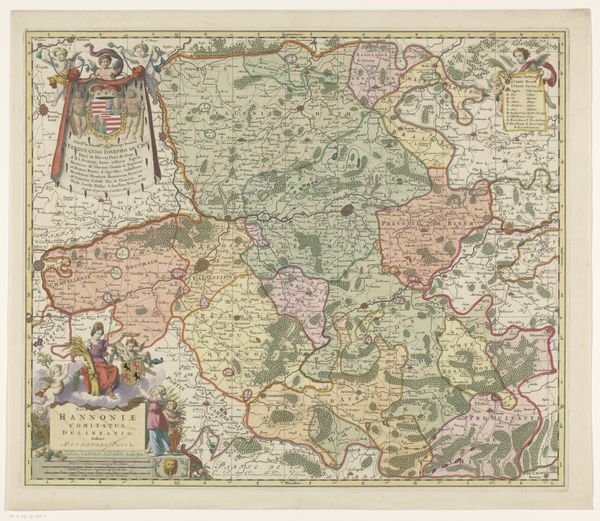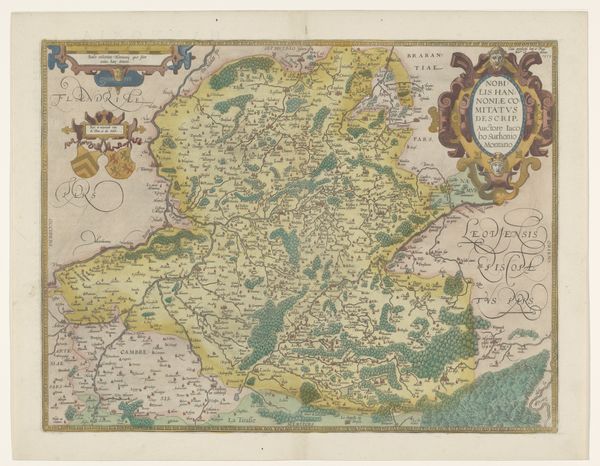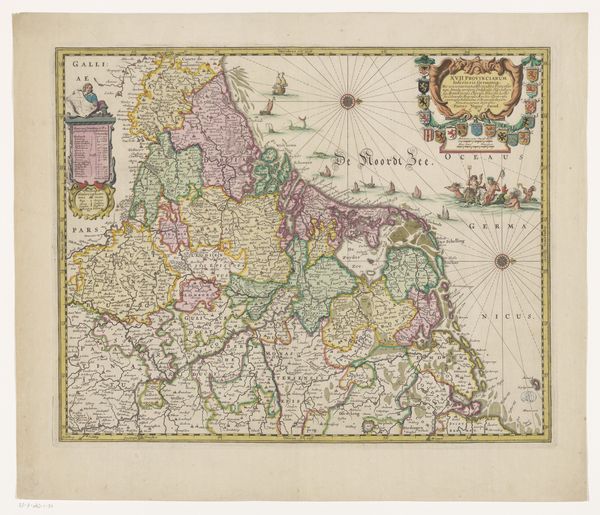
graphic-art, print, engraving
#
graphic-art
#
baroque
#
dutch-golden-age
# print
#
old engraving style
#
engraving
Dimensions: height 380 mm, width 490 mm
Copyright: Rijks Museum: Open Domain
Curator: What a remarkably intricate map! This is a 1633 engraving titled "Kaart van het graafschap Henegouwen," or "Map of the County of Hainaut," created by Joannes van Doetechum. It's currently held at the Rijksmuseum. Editor: Immediately, I’m struck by the almost frantic detail – every little village seems rendered with such careful attention. There's something about this that speaks to ownership and control. Curator: Precisely. Consider how maps, particularly during this era, were powerful symbols. They visualized dominion, making claims tangible and visually asserting authority. The elaborate cartouches, for instance, holding dedications or coats of arms, reinforced a ruling family's power and lineage. Editor: Yes, and it's not just geographical accuracy at play, is it? The landscape itself is a constructed narrative. The size and placement of forests, for example, may be more symbolic than representative of reality. Were they shaping perception as much as charting land? Curator: Absolutely. We can delve into the Dutch Golden Age context; while scientific mapping grew, artistic elements rooted in baroque sensibilities gave rise to dramatic flair in mapping; this means idealized and romantic notions also influenced their depiction of the landscape. The "truth" wasn't simply geographic. The truth becomes enmeshed with social and cultural assumptions of power and order. Editor: This visual hierarchy certainly raises some questions about which communities are privileged and whose existences are possibly elided. For example, did this region encompass territories controlled by various groups with diverse power dynamics beyond nobility and their heraldry on display? It’s tempting to see echoes of ongoing struggles, land disputes and even environmental change concealed within its aesthetic appeal. Curator: A valid question. We tend to read older images differently because over time social norms change about power, possession and display of wealth. The use of heraldic emblems and idealized scenery create continuity for cultural memory through its graphic symbolism. Editor: Absolutely. It reveals more by what is included and what’s not. In understanding these historic cartographies, it is important to consider perspectives and silences while exploring narratives told by art.
Comments
No comments
Be the first to comment and join the conversation on the ultimate creative platform.
